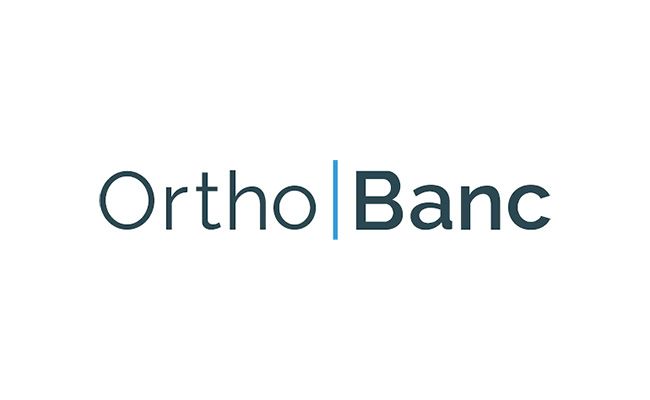CUSTOMER PROFILE
ABOUT
Planning an event involves juggling myriad tasks and wearing many hats. Cvent’s web-based technology platform simplifies the process for event planners by streamlining meeting site selection, online registration, event management and more.
Founded in 1999 and headquartered in Tysons Corner, Virginia, Cvent has 330 contact center employees in 22 locations across North America, Europe, Asia Pacific and the Middle East. Its largest contact center is located in Gurgaon, India.
The contact centers handle 280,000 inbound interactions and 311,000 inbound calls per year via phone, chat and web form. Most of the interactions are post-sale questions, such as how to set up a new event session, configure registration and charge for an event.
High customer satisfaction is central to Cvent’s mission to build long-term relationships with its clients. “We want every interaction to be high touch, so our contact center is critical to that goal,” says Alexis Petrovich, Director Business Management for Cvent.
NICE CXONE SOLUTIONS
- CXone Omnichannel Routing
- CXone Chat
- CXone Agent for Salesforce®
- My Agent eXperience — MAX
RESULTS ACHIEVED
- 94.1% “overall satisfied” rating from customers across all service lines
- 87% increase in system uptime
- 86% decrease in time spent pulling data for reporting
- 71% “overall satisfied” rating from employees
- 70% reduction in costs with introduction of Request to Call functionality
- 27% Net Promoter Score® (NPS), which is higher than average for SaaS technology companies
THE CHALLENGE
In 1991, DSW started as a single store that was open three days a week. Today, DSW operates nearly 550 stores in the US and Canada.
However, its successful expansion was hampered by its outdated on-premises Genesys system, which was unstable and difficult to update. As the company grew and interaction volumes increased, Genesys made it difficult to keep up.
“Genesys wasn’t keeping pace with our growth,” says Tim Harpe, director of global customer operations. “Since it was on-premises, we were locked in to a specific level of support that we could provide to our customers, which restricted our growth.
“We were using multiple tools for voice, email and chat, which made it difficult to get reports for each channel, plus it was challenging to know when agents needed to be shifted to handle fluctuating volumes.”
Genesys’s inflexibility also made it difficult to update the system in real time. “One person in our IT department had the knowledge and ability to make system updates,” explains Tim. “When we needed real-time changes, we had to hope he wasn’t working on something else.”
It was also an expensive system to maintain. “If I wanted to add or remove agents, I often needed to contract a professional outside our organization. Near the end, Genesys was also very unstable, so we couldn’t count on it, which impacted customer support,” Tim says.
This threatened DSW’s business continuity if a disaster occurred. “If, God forbid, a car drove into our home office and shut down operations, we would have had no way to service customers,” says Tim. “When COVID-19 hit, our call volumes increased 70%. With Genesys, it would have been impossible to move all our agents to working from home and simultaneously service the massive increase in volume.”
DSW also couldn’t easily grow its operations, including using cost-effective overseas BPOs. “We couldn’t even entertain the idea of using BPOs to expand our contact center. There were too many hurdles to overcome,” Tim continues.
THE SOLUTION
In 1991, DSW started as a single store that was open three days a week. Today, DSW operates nearly 550 stores in the US and Canada.
However, its successful expansion was hampered by its outdated on-premises Genesys system, which was unstable and difficult to update. As the company grew and interaction volumes increased, Genesys made it difficult to keep up.
“Genesys wasn’t keeping pace with our growth,” says Tim Harpe, director of global customer operations. “Since it was on-premises, we were locked in to a specific level of support that we could provide to our customers, which restricted our growth.
“We were using multiple tools for voice, email and chat, which made it difficult to get reports for each channel, plus it was challenging to know when agents needed to be shifted to handle fluctuating volumes.”
Genesys’s inflexibility also made it difficult to update the system in real time. “One person in our IT department had the knowledge and ability to make system updates,” explains Tim. “When we needed real-time changes, we had to hope he wasn’t working on something else.”
It was also an expensive system to maintain. “If I wanted to add or remove agents, I often needed to contract a professional outside our organization. Near the end, Genesys was also very unstable, so we couldn’t count on it, which impacted customer support,” Tim says.
This threatened DSW’s business continuity if a disaster occurred. “If, God forbid, a car drove into our home office and shut down operations, we would have had no way to service customers,” says Tim. “When COVID-19 hit, our call volumes increased 70%. With Genesys, it would have been impossible to move all our agents to working from home and simultaneously service the massive increase in volume.”
DSW also couldn’t easily grow its operations, including using cost-effective overseas BPOs. “We couldn’t even entertain the idea of using BPOs to expand our contact center. There were too many hurdles to overcome,” Tim continues.
OPPORTUNITIES IDENTIFIED
Managers spend 86% less time creating reports
With CXone, Cvent experienced an 87% increase in system uptime and benefits from real-time reporting that doesn’t take days to pull together. “The evolution from where we were to where we are now is impressive,” says Alexis. “Having all our data available in CXone is a huge time saver for creating reports. Our managers can spend more time coaching their teams rather than manually sifting through data.”
Alexis estimates that managers are spending 86% less time pulling data — the equivalent of saving 54 weeks of work each year — and the type of data they’re getting has also improved. “It doesn’t take nearly as much time to understand what’s going on in each line of business because CXone gives us accurate, real-time data,” says Alexis.
Performance metrics are also shared with agents, which has had a positive impact on employee engagement. “At any given point, our agents know how they’re doing by reviewing their performance data via dashboards,” says Alexis. “They also know specifically where to focus in order to improve.”
Enhanced reporting also drives Cvent’s popular employee rewards programs. “We have rewards programs for each line of business and at the department level,” says Alexis. “We use CXone reports to recognize high performers, taking into account factors like productivity, customer satisfaction and coaching metrics — data that we didn’t have with our old system or that was too time-consuming to calculate.”
CXone’s ease of use also contributes to employee engagement and retention. “When your employees like the tools they’re using, such as CXone’s intuitive interface, it impacts overall experience and influences attrition rates,” says Alexis.
Salesforce integration supports customer satisfaction
Today, Cvent’s Salesforce CRM system is fully integrated through CXone Agent for Salesforce®. “Integration with Salesforce makes it much easier for our agents to serve customers,” says Alexis. “Every customer’s information is at their fingertips.”
The integration with Salesforce also means agents are working with one system instead of two, which also improves the customer experience. “Agents can answer questions more quickly and spend less time logging details into two systems,” says Alexis.
70% cost reduction
Cvent is using the CXone IVR to automatically route customers to Tier 1 or Tier 2 agents. “CXone makes it much easier to manage multiple queues and skills. Our customers spend less time waiting in the queue for someone to help them,” says Alexis.
Costs also fell 70% with the introduction of CXone’s “Request to Call” functionality on the company’s Customer Community web page. “Customers can now choose to have an agent call them back rather than waiting in the queue,” explains Alexis.
All of these advancements contributed to a 94.1% “overall satisfied” rating from customers across all service lines and a 71% “overall satisfied” rating from employees.
Alexis believes CXone has had a positive financial impact by contributing to a reduction in the amount of time managers spend pulling reports and reducing agent attrition. Those benefits, along with a seamless Salesforce integration and improved customer experience, have all had a positive effect on customer satisfaction and employee engagement.
“I would definitely recommend CXone and NICE CXone to my colleagues and peers,” says Alexis, “especially if they want a reliable system with real-time reporting and Salesforce integration with very user-friendly navigation.”







